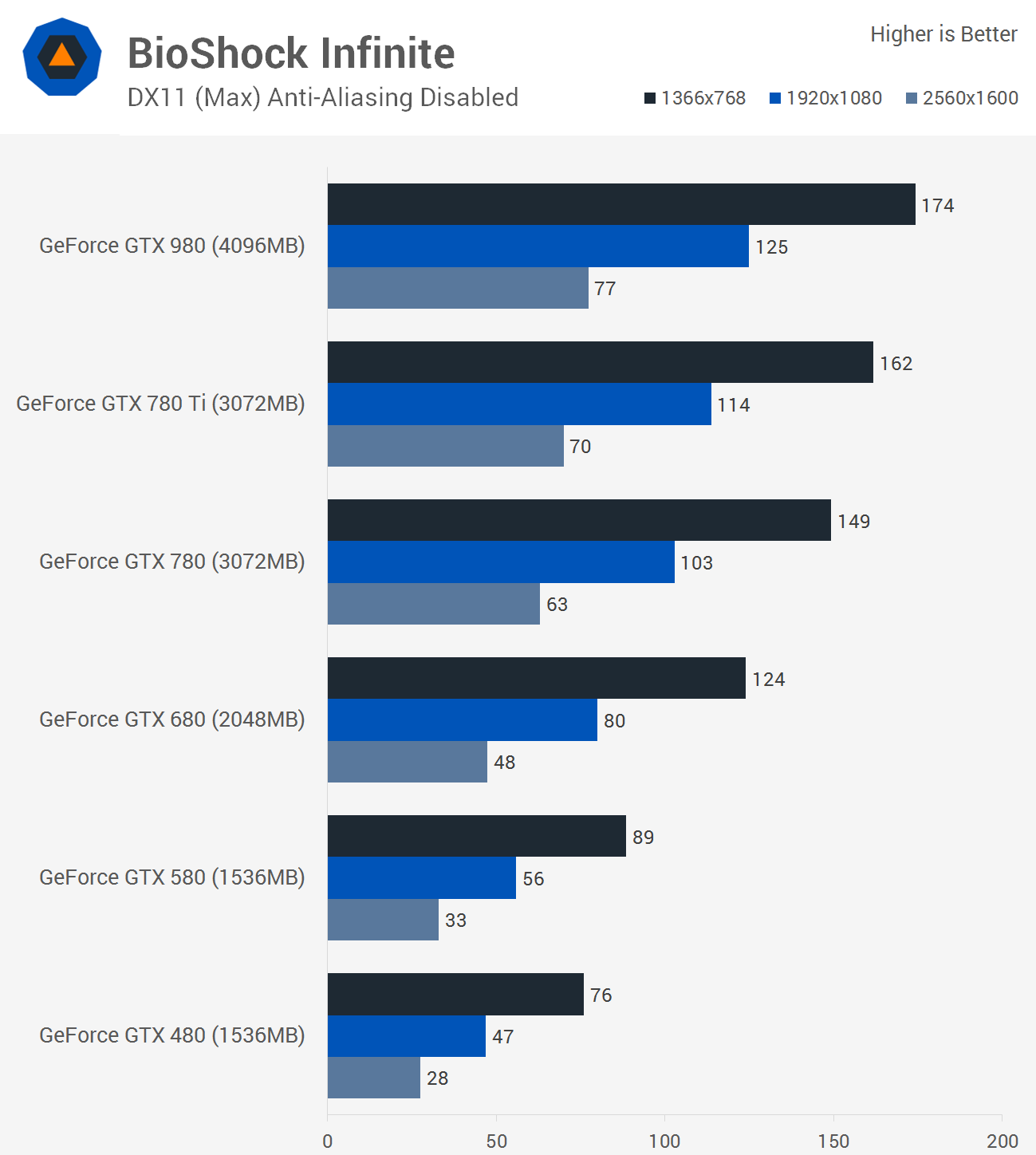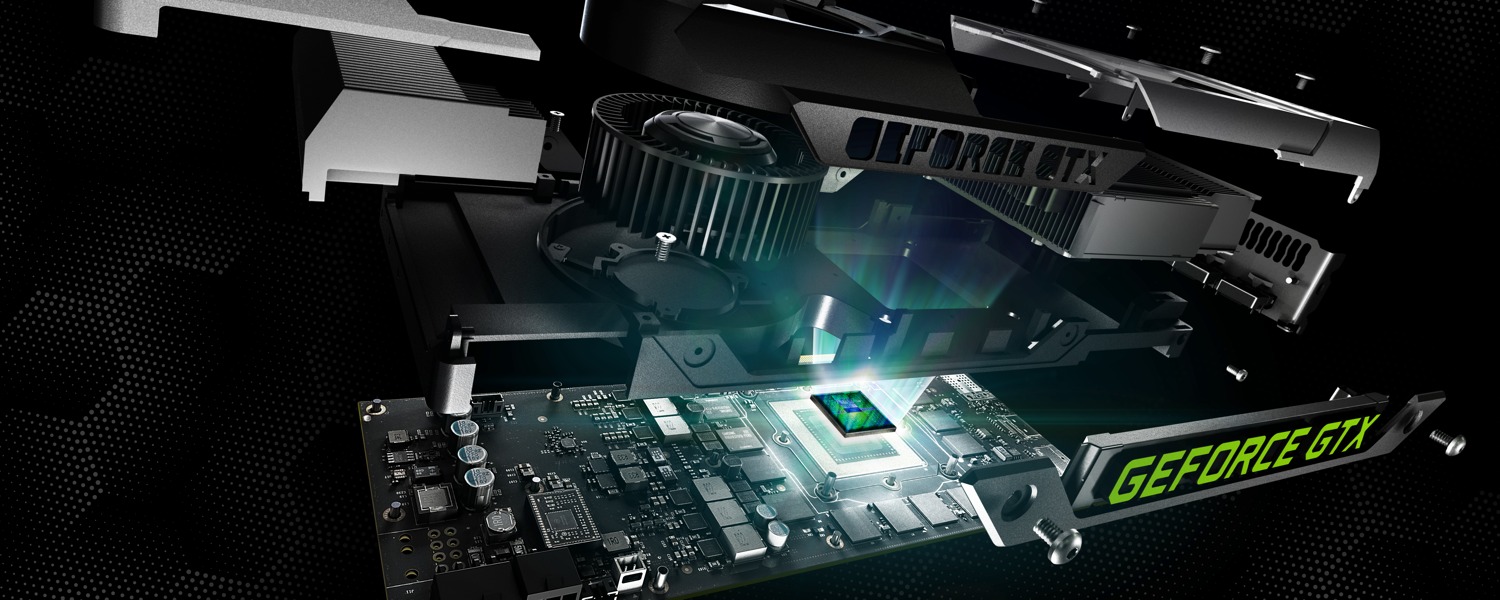Benchmarks: Crysis 3, BioShock

Starting with the 1080p results, the GeForce GTX 480 was good for just 27fps in Crysis 3. Remember all forms of anti-aliasing were disabled, so this is a weak result, though not unexpected from the almost five-year-old flagship part.
The jump from the GTX 480 to the GTX 580 saw a mere 15% increase in performance while the upgrade from the GTX 580 to the GTX 680 was much more impressive with the GTX 680 delivering 45% more performance with 45fps. The GTX 780 also delivered a respectable 20% more performance than the GTX 680.
Although the GTX 780 Ti and GTX 780 are of the same family we still saw a 13% increase in performance which was a similar gain from the GTX 480 to the GTX 580. Finally the weakest performance gain was seen from the new GTX 980 which was just 8% faster than the GTX 780 Ti.
Boosting the resolution to 2560x1600 provided similar performance margins, though this time the GTX 980 was 11% faster than the GTX 780 Ti.

The GTX 480 managed a playable 47fps at 1080p in BioShock Infinite while the GTX 580 was 19% faster with 56fps. Moving from the GTX 580 to the GTX 680 produced a massive 43% performance increase.
Likewise, GTX 780 provided strong gains over the GTX 680 with 29% more frames and the GTX 780 Ti was 11% faster than the vanilla GTX 780. As we saw when testing Crysis 3 the GTX 980 was only marginally faster than the GTX 780 Ti, this time 10% faster.
Again increasing the resolution to 2560x1600 had little impact on performance, though keep in mind anti-aliasing was disabled.
